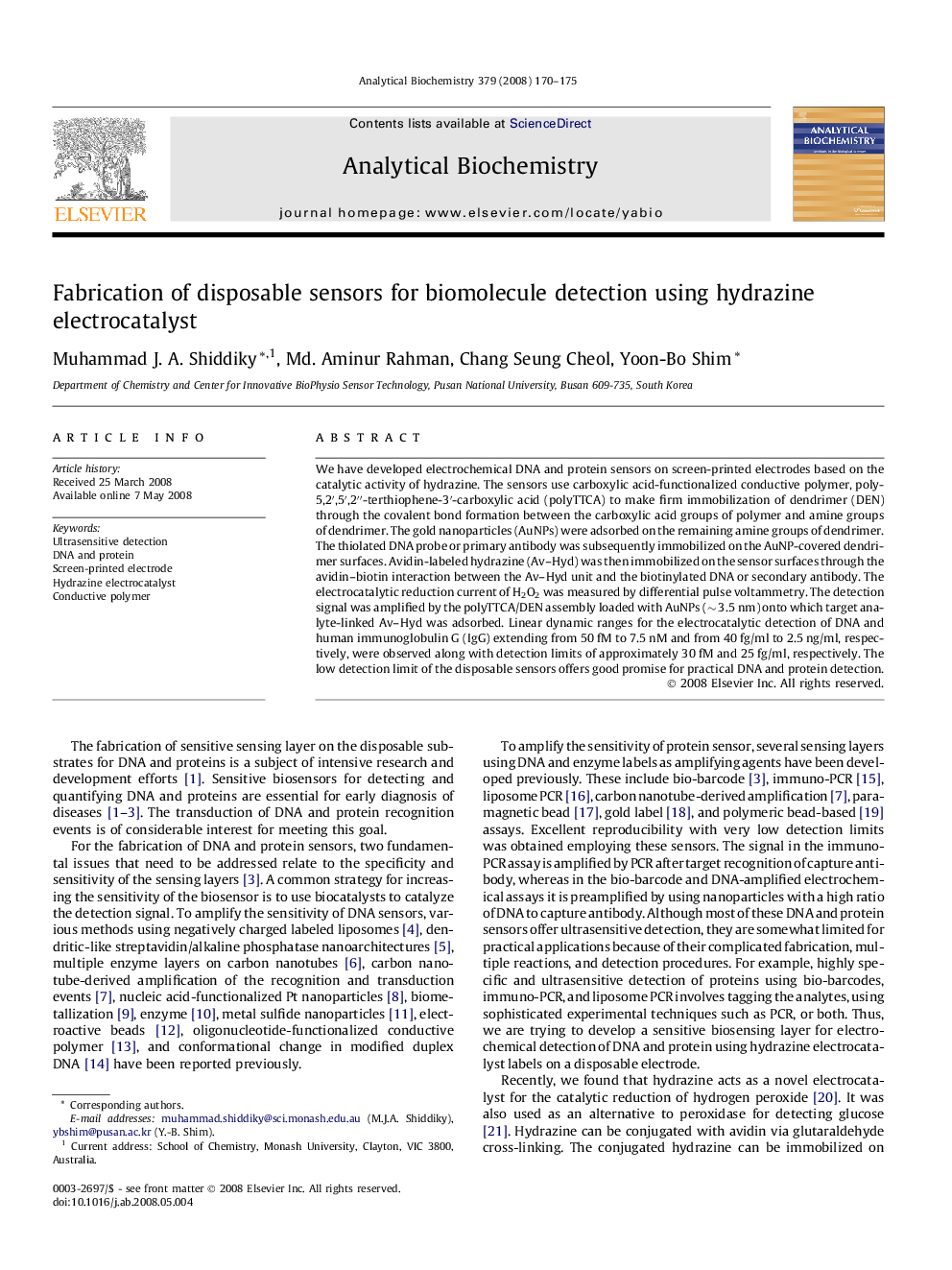| کد مقاله | کد نشریه | سال انتشار | مقاله انگلیسی | نسخه تمام متن |
|---|---|---|---|---|
| 1176264 | 961839 | 2008 | 6 صفحه PDF | دانلود رایگان |

We have developed electrochemical DNA and protein sensors on screen-printed electrodes based on the catalytic activity of hydrazine. The sensors use carboxylic acid-functionalized conductive polymer, poly-5,2′,5′,2′′-terthiophene-3′-carboxylic acid (polyTTCA) to make firm immobilization of dendrimer (DEN) through the covalent bond formation between the carboxylic acid groups of polymer and amine groups of dendrimer. The gold nanoparticles (AuNPs) were adsorbed on the remaining amine groups of dendrimer. The thiolated DNA probe or primary antibody was subsequently immobilized on the AuNP-covered dendrimer surfaces. Avidin-labeled hydrazine (Av–Hyd) was then immobilized on the sensor surfaces through the avidin–biotin interaction between the Av–Hyd unit and the biotinylated DNA or secondary antibody. The electrocatalytic reduction current of H2O2 was measured by differential pulse voltammetry. The detection signal was amplified by the polyTTCA/DEN assembly loaded with AuNPs (∼ 3.5 nm) onto which target analyte-linked Av–Hyd was adsorbed. Linear dynamic ranges for the electrocatalytic detection of DNA and human immunoglobulin G (IgG) extending from 50 fM to 7.5 nM and from 40 fg/ml to 2.5 ng/ml, respectively, were observed along with detection limits of approximately 30 fM and 25 fg/ml, respectively. The low detection limit of the disposable sensors offers good promise for practical DNA and protein detection.
Journal: Analytical Biochemistry - Volume 379, Issue 2, 15 August 2008, Pages 170–175